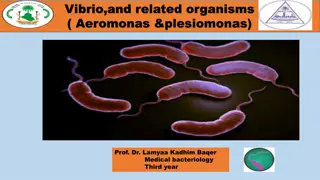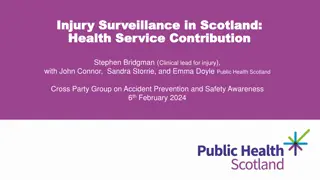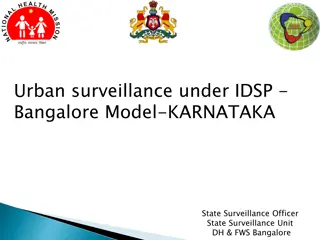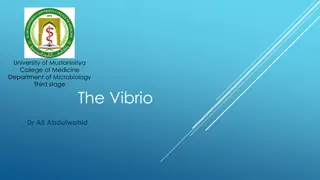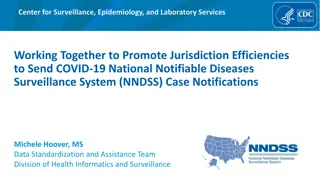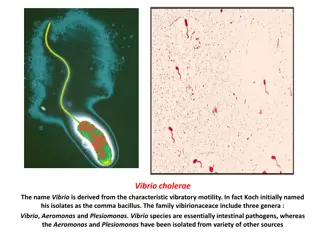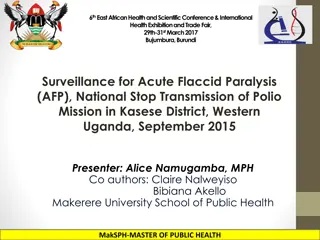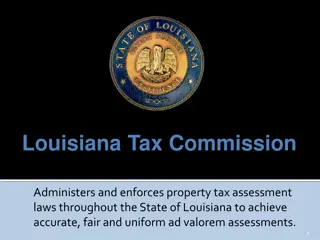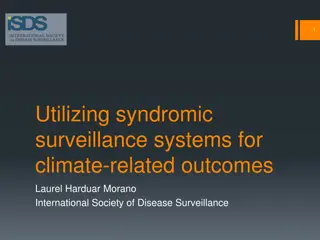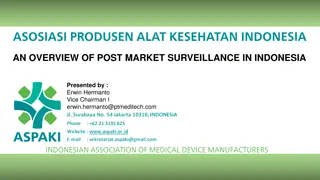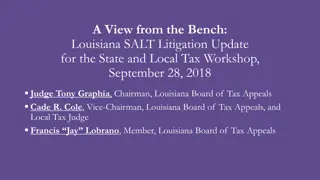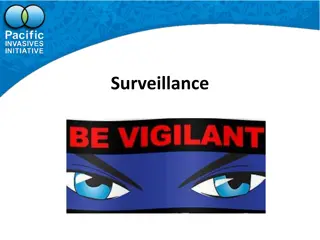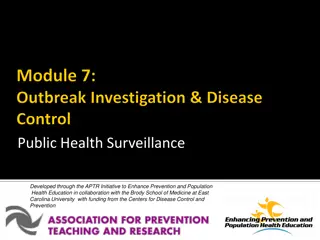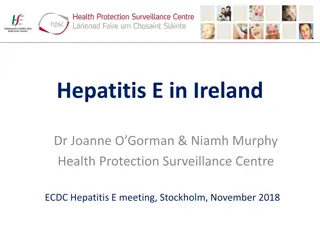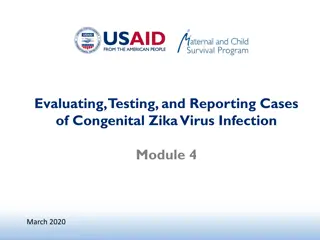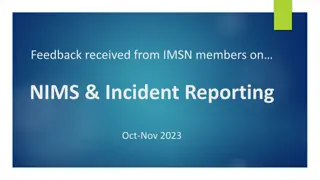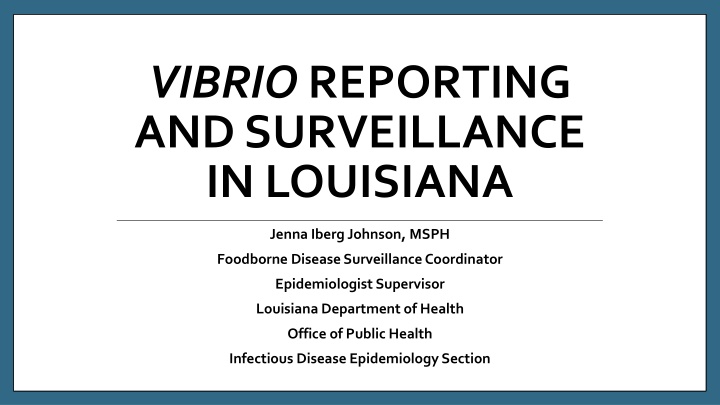
Vibrio Reporting and Surveillance in Louisiana: Guidelines and Procedures
Learn about the reporting and surveillance procedures for Vibrio infections in Louisiana, including how cases are reported, investigated, and notified to relevant authorities such as CDC and FDA. Find out the notification timeline for handling Vibrio cases effectively.
Download Presentation

Please find below an Image/Link to download the presentation.
The content on the website is provided AS IS for your information and personal use only. It may not be sold, licensed, or shared on other websites without obtaining consent from the author. If you encounter any issues during the download, it is possible that the publisher has removed the file from their server.
You are allowed to download the files provided on this website for personal or commercial use, subject to the condition that they are used lawfully. All files are the property of their respective owners.
The content on the website is provided AS IS for your information and personal use only. It may not be sold, licensed, or shared on other websites without obtaining consent from the author.
E N D
Presentation Transcript
VIBRIO REPORTING AND SURVEILLANCE IN LOUISIANA Jenna Iberg Johnson, MSPH Foodborne Disease Surveillance Coordinator Epidemiologist Supervisor Louisiana Department of Health Office of Public Health Infectious Disease Epidemiology Section
Reporting VibrioCases Vibrio infections are reportable to the Office of Public Health Infectious Disease Epidemiology by the Louisiana Sanitary Code reporting is required within 5 business days Vibrioinfections are reported by: Medical providers Laboratories hospital, reference and state labs Reports received via fax, electronic lab reporting, or entered by provider into our reportable disease surveillance system
Investigating VibrioCases Epidemiologists follow up on all reported Vibrio cases Request lab reports and notes from provider Request an isolate be sent to our state lab for confirmation Complete COVIS form and send to relevant parties If oyster consumption is identified, notify Molluscan Shellfish Program who coordinates trace back If other seafood at retail establishment is identified, notify sanitarians to follow-up with establishment to review procedures, etc Enter details into reportable disease surveillance system Enter details into Vibrio database
Notifications of Vibriocases All COVIS forms are submitted to CDC Weekly preliminary case count by species submitted to CDC If case reports oyster consumption, COVIS form is also sent to FDA Molluscan Shellfish Program is aware of all cases who report oyster consumption because they conduct trace back Sanitarians are aware of cases involving other seafood at retail establishment because they conduct inspections
Notification timeline Vibrioinfections are reportable within 5 business days but this does not always happen Epidemiologists follow-up with case to complete COVIS as soon as possible Foodborne coordinator notifies Molluscan Shellfish Program as soon as oyster consumption is identified Foodborne coordinator notifies FDA of case reporting oyster consumption as soon as tags are secured Foodborne coordinator submits COVIS form to CDC once lab confirmation is complete (if done), oyster tags secured, any other relevant follow-up completed
Timeliness of COVIS submission to CDC Submission of COVIS can be delayed due to: Multiple steps in processing cases Difficulty reaching provider for records Difficulty reaching patient for follow-up Difficulty in securing relevant oyster tags Lab confirmation takes time Work load of OPH epidemiologists, sanitarians, molluscan shellfish



